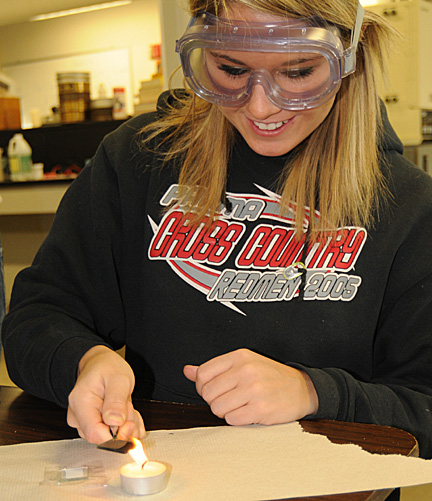Ingredients: white paint, glass slides, carbon and blackberries (the fruit, not the personal digital assistant).
 With these common materials, first-year UT students in Orientation and Computing for Chemical Engineers last month constructed solar cells and tested the performance of the small devices.
With these common materials, first-year UT students in Orientation and Computing for Chemical Engineers last month constructed solar cells and tested the performance of the small devices.
These cells represent one of the options being considered for the third-generation solar cell, according to Dr. Glenn Lipscomb, professor and chair of chemical and environmental engineering.
Referred to as dye-sensitized solar cells, the devices use dye that gives blackberries their color to capture sunlight, he explained. This leads to the release of electrons and the flow of electricity. The dye hands off the electrons to a titanium dioxide layer — the white paint pigment — which sends the electrons to an electric device.
“The solar cell is constructed by simply painting an electrically conducting glass slide — graciously provided by our local Pilkington plant — with the white pigment and firing it in an oven,” Lipscomb said. The slide is then immersed in blackberry juice to attach the dye, and a second slide is coated with carbon by placing it in the flame of a candle. Placing the two slides in contact with each other and adding a little iodine yields the final solar cell.
“It’s amazing how easily you can construct these solar cells,” Lipscomb said. “Their potential is enormous. This lab exercise provides students a potential glimpse of future employment opportunities.”
Orientation and Computing for Chemical Engineers is the first class that freshman chemical engineering students take. In class, they are introduced to chemical engineering problem-solving techniques and participate in laboratory activities.